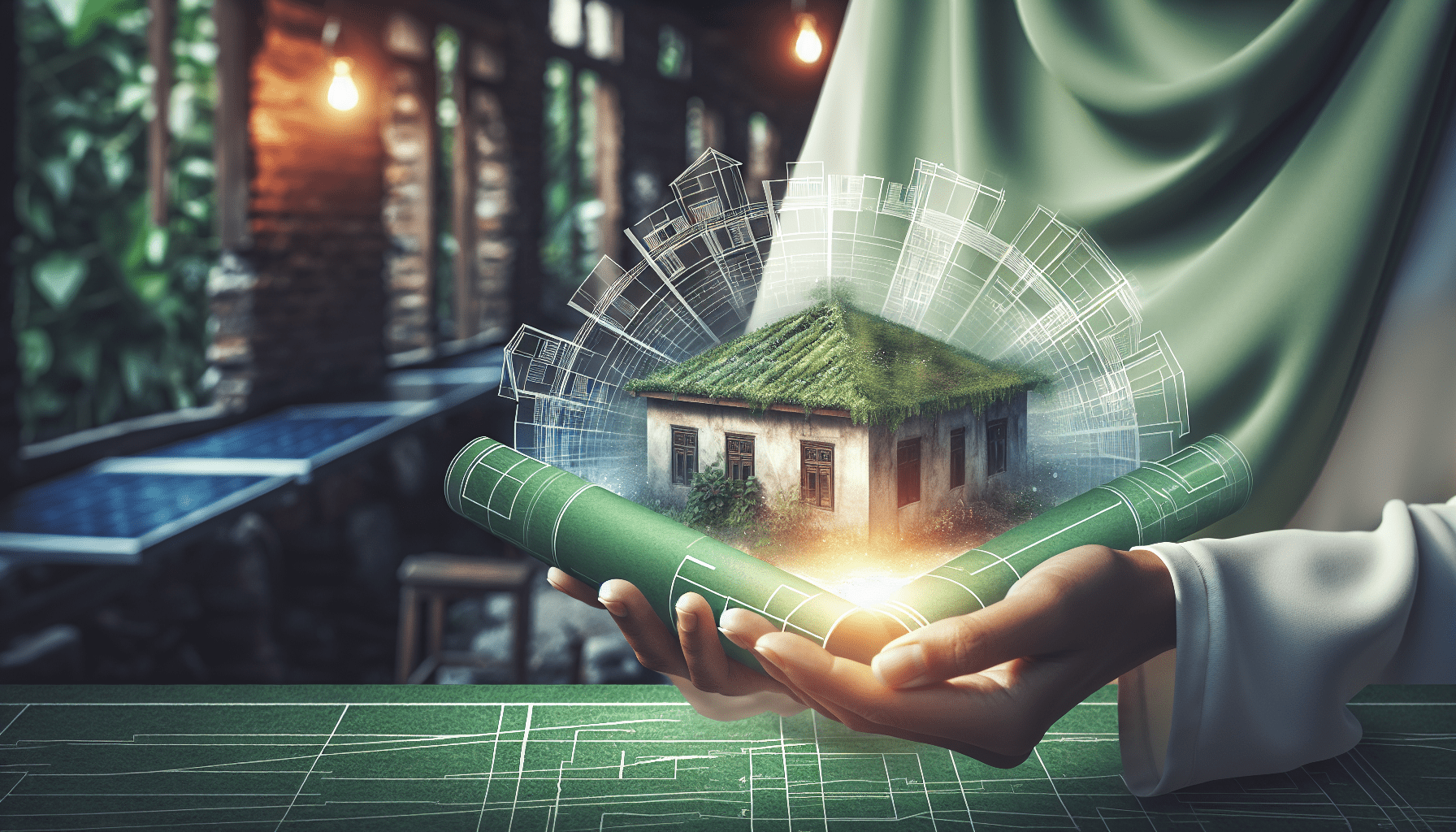Retrofitting existing buildings for sustainable solutions is not just a trend but a necessity for our future. In this article, we explore practical and impactful ways to transform our current structures into more eco-friendly spaces. By focusing on energy efficiency, resource management, and innovative technologies, we can significantly reduce the carbon footprint of our built environment. Let’s dive into the steps we can take to retrofit our buildings effectively, making them more sustainable for generations to come. Have you ever wondered how we can retrofit an existing building to be more sustainable? As we grow increasingly aware of our environmental impact, retrofitting existing buildings has emerged as a pivotal step towards sustainable development. Whether we are refashioning our homes, workplaces, or community centers, transitioning to more eco-friendly structures can make a significant difference.
In this article, we’ll dive into various strategies for retrofitting existing buildings to make them more sustainable. From energy-efficient upgrades to water conservation techniques, we’ll cover essential practices that can be implemented to minimize our carbon footprint and lower operating costs. Let’s explore practical solutions for a greener future!
Understanding Sustainable Retrofitting
Defining Sustainable Retrofitting
Sustainable retrofitting refers to making modifications to existing buildings to improve their environmental performance and reduce their energy consumption. This process not only helps in reducing greenhouse gas emissions but also enhances the building’s overall efficiency. By integrating modern technology and sustainable practices, we can transform old buildings into eco-friendly havens.
Importance of Retrofitting
When we retrofit a building for sustainability, we are not just making quick fixes. We are investing in long-term benefits such as improved energy efficiency, lower utility bills, enhanced occupant comfort, and increased property value. Furthermore, retrofitting existing structures is often more environmentally friendly compared to the full-scale demolition and reconstruction of buildings.
Steps to Begin Retrofitting
Assessment of Current Building Performance
Before jumping into any retrofitting project, it’s crucial to assess the current performance of the building. This includes evaluating the building’s energy consumption, water usage, and material efficiency. We can employ energy audits and building performance testing to identify areas for improvement.
Setting Clear Goals and Objectives
What do we hope to achieve with our retrofitting project? Are we aiming to reduce energy consumption by a certain percentage, increase water efficiency, or enhance indoor air quality? Setting clear and attainable goals can help guide our efforts and measure success.
Budgeting and Financing
Retrofitting can be an expensive undertaking, but there are various financial mechanisms available, such as grants, loans, and tax incentives designed to promote sustainable building practices. We need to carefully plan our budget and seek potential funding opportunities to ensure the project’s financial feasibility.

Energy Efficiency Upgrades
Improving Insulation
One of the most effective ways to enhance energy efficiency is by improving the building’s insulation. Proper insulation prevents heat loss during winter and keeps the building cool in the summer.
Key Insulation Materials:
| Material | Description | Benefits |
|---|---|---|
| Fiberglass | Made from fine glass fibers | Affordable, reduces energy costs |
| Foam Board | Rigid panels of insulation | High insulation value per inch, moisture-resistant |
| Spray Foam | Expands on application to seal gaps | Excellent air barrier, conforms to irregular shapes |
| Cellulose | Made from recycled paper products | Eco-friendly, good thermal performance |
Upgrading Windows and Doors
Windows and doors are major sources of heat loss. Upgrading to energy-efficient windows and doors can significantly reduce energy consumption.
Considerations for Upgrading:
- Double or Triple Glazed Windows: Reduce heat transfer and improve insulation.
- Weather Stripping: Prevents air leaks around doors and windows.
- Low-E Glass: Minimizes heat gain and loss.
Efficient Heating, Ventilation, and Air Conditioning (HVAC)
Upgrading to more efficient HVAC systems can greatly reduce a building’s energy consumption. This includes installing programmable thermostats, using energy-efficient appliances, and ensuring regular maintenance of HVAC systems.
Renewable Energy Integration
Solar Panels
By installing solar panels, we can harness renewable energy from the sun, reducing reliance on fossil fuels. Solar panels convert sunlight into electricity and can substantially cut energy bills.
Steps to Install Solar Panels:
- Assessment: Evaluate roof space and sunlight exposure.
- Choosing the System: Select the appropriate solar panel system for the building’s needs.
- Installation: Hire professional installers to ensure safe and efficient installation.
- Maintenance: Regular cleaning and check-ups to maintain efficiency.
Wind Energy
For buildings located in windy areas, small wind turbines can be an excellent alternative or supplement to solar power. Wind turbines generate electricity from the wind and can be highly effective in decreasing net energy consumption.
Geothermal Systems
Geothermal systems take advantage of the earth’s stable underground temperature to heat and cool buildings. Installing geothermal heat pumps can significantly improve heating efficiency and reduce the building’s carbon footprint.

Water Conservation Techniques
Low-Flow Fixtures
Installing low-flow faucets, showerheads, and toilets can drastically reduce water usage. These fixtures are designed to provide adequate water flow while minimizing wastage.
Rainwater Harvesting
By collecting and storing rainwater, we can create a sustainable water supply for irrigation and non-potable uses, such as flushing toilets.
Greywater Recycling
Greywater recycling systems treat and reuse wastewater from baths, sinks, and laundry for purposes like irrigation and toilet flushing. This reduces freshwater consumption and is an effective way to reduce our water footprint.
Sustainable Building Materials
Choosing Eco-Friendly Materials
When retrofitting, it’s essential to select materials that have a low environmental impact, are durable, and promote indoor air quality.
Examples of Eco-Friendly Materials:
- Bamboo: Rapidly renewable and durable.
- Recycled Steel: Reduces the need for new raw materials.
- Reclaimed Wood: Adds character and reduces deforestation.
- Green Roofing Materials: Insulate the building and support urban biodiversity.
Reducing Waste
Using prefabricated components and modular construction techniques can reduce construction waste. Additionally, recycling and repurposing materials from the building can contribute to sustainability.

Enhancing Indoor Environmental Quality
Improving Air Quality
Maintaining high indoor air quality is crucial for the health and well-being of occupants. This can be achieved by using non-toxic, low-VOC (volatile organic compound) paints and materials, installing air purifiers, and ensuring proper ventilation.
Natural Lighting
Maximizing natural light can reduce the need for artificial lighting and improve the well-being of occupants. This can be achieved through the strategic placement of windows, skylights, and the use of light-reflective surfaces.
Smart Building Technologies
Building Automation Systems
Building automation systems (BAS) manage and control building systems like HVAC, lighting, and security, making them more efficient and responsive to occupant needs.
Benefits of BAS:
- Energy Savings: Optimize energy use based on occupancy and time of day.
- Improved Comfort: Maintain optimal indoor conditions.
- Enhanced Security: Integrate with security systems for better monitoring.
Smart Meters
Smart meters provide detailed insights into energy consumption, helping us monitor usage patterns and identify opportunities for savings.
LED Lighting
Switching to LED lighting is a straightforward and highly effective way to reduce energy consumption. LEDs use less electricity, last longer, and provide better lighting quality compared to traditional light bulbs.

Case Studies and Examples
Historic Building Retrofits
Many historic buildings have been successfully retrofitted to become more sustainable while preserving their architectural integrity:
Example:
- Empire State Building, New York: Modernized with energy-efficient windows, upgraded insulation, and smart building technologies, resulting in significant energy savings.
Office Building Retrofits
Modern office buildings can greatly benefit from sustainable retrofitting:
Example:
- The Edge, Amsterdam: Known as the world’s most sustainable office building, featuring solar panels, energy-efficient HVAC systems, and advanced building automation.
Challenges and Solutions
Common Challenges
Retrofitting for sustainability is not without its challenges. These may include high initial costs, potential disruptions during construction, regulatory hurdles, and the complexity of integrating new systems with old infrastructure.
Overcoming Challenges
Solutions:
- Incentives and Grants: Utilize available financial incentives to offset costs.
- Phased Implementation: Break the project into manageable phases to minimize disruptions.
- Expert Consultation: Engage experts in sustainable building practices to navigate regulatory and technical challenges.

Future Trends in Sustainable Retrofitting
Innovative Materials
Research and development in sustainable building materials are continually advancing. Future retrofitting projects may benefit from materials that are even more energy-efficient, durable, and environmentally friendly.
Advances in Renewable Energy
As technology evolves, renewable energy sources like solar and wind are becoming more efficient and accessible. Emerging technologies, such as solar windows and urban wind turbines, hold promise for future retrofitting efforts.
Enhanced Building Intelligence
The integration of artificial intelligence and machine learning in building management systems will allow for even greater efficiencies and customization, further driving sustainability in existing buildings.
Conclusion
Retrofitting existing buildings for sustainable solutions not only contributes to environmental conservation but also offers substantial economic and social benefits. By focusing on energy efficiency, renewable energy integration, water conservation, and the use of eco-friendly materials, we can transform our buildings into smart, efficient, and sustainable spaces.
As we continue to advance in technology and sustainable practices, the possibilities for creating greener buildings are limitless. Let us embrace these opportunities and work towards a more sustainable future for our communities and the planet.
Feel free to adjust, expand, or condense any sections to better suit your needs.